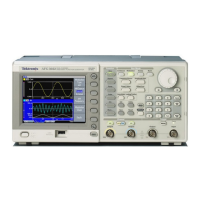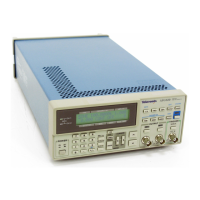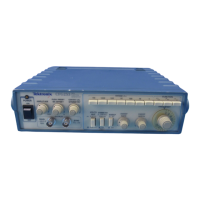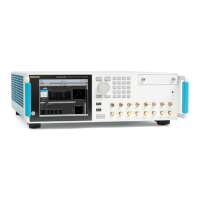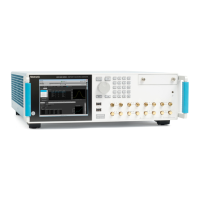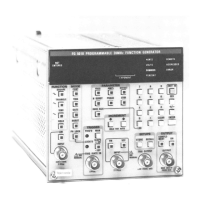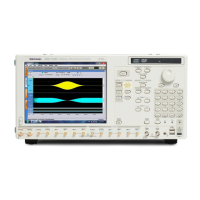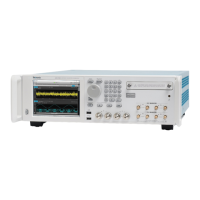Operating basics
ANTENNA: Input
connector for a GPS and/or GLONASS antenna.
The antenna input must meet specific requirements. (See page 3-103,
GPS/GLONASS antenna requirements.)
You can use the GPS7 module menu to enable this connector to provide 3.3 V
or 5 V DC power to the antenna. When the connector is configured to provide
power to the antenna, the rear-panel POWER indicator lights as follows:
Blinks green to indicate an open circuit. This occurs if no antenna is
connected or if the current load is less than expected because a splitter
or DC block is being used.
Displays solid red if the connected antenna is shorted. A shorted antenna
will not damage the GPS7 module. If a splitter is used on the antenna, it
may appear as a short at DC but will still pass through the RF signal,
which wi
ll allow the GPS to function.
Displays solid green if the current load of the antenna is within the
nomina
lrange.
LTC/GPI: 15 pin, D-sub connector that carries four differential LTC signals,
one gr
ound closure input, and two ground closure outputs. You can use the
menus to independently set the format and timing of the four LTC signals and
to select the f unction of the ground closure input and outputs.
You can configure LTC1 to be an LTC input instead of an output. The
supported LTC input signal formats include 23.98, 24, 25, 29.97 drop frame,
and 30 Hz, as per SMPTE 12M.
The LTC/GPI connector provides full functionality when you use the LTC
DSUB-to-XLR breakout cable that is available as an optional accessory with
the GPS7 module. The LTC/GPI connector provides partial functionality when
you use a standard RGBHV (VGA-to-BNC) breakout cable. (See Table 2-4.)
N
OTE. You do not need the optional LTC and GPI breakout cable if you are using
only VITC and/or ATC as a timecode signal.
For correct operation if you use a VGA-to-BNC breakout cable, pins 6, 7, 8, and
10 must be internally grounded together in the cable and to the connector shell.
TG8000 Multiformat Test Signal Generator User Manual 2–13

